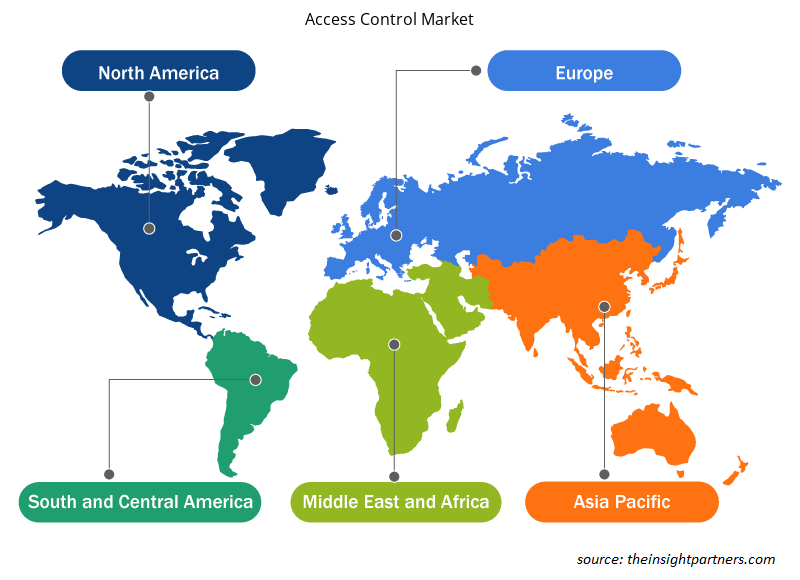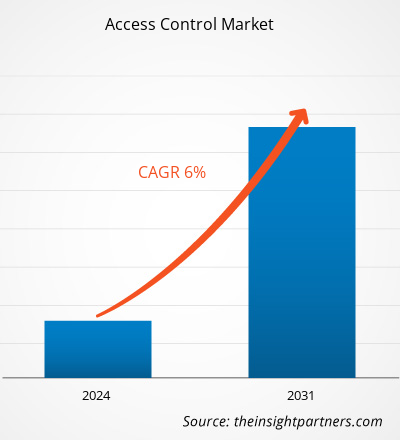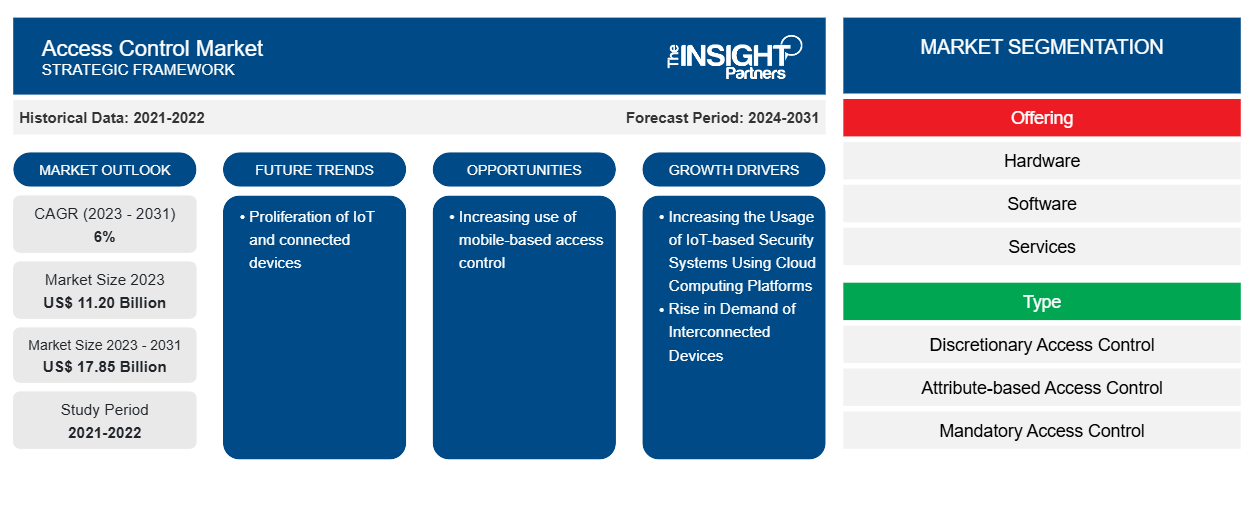预计到 2031 年,门禁市场规模将从 2023 年的 112 亿美元增至 178.5 亿美元。预计 2023-2031 年门禁市场复合年增长率将达到 6%。由于对更强大的安全系统的需求不断增长,以及物联网 (IoT) 和云计算平台的广泛使用,市场正在不断扩大。
门禁控制市场分析
访问控制可保护机密信息(例如客户数据和知识产权)免遭恶意行为者或其他未经授权用户的窃取。它还可以降低员工数据泄露的风险并防范基于网络的威胁。大多数注重安全的公司都依赖身份和访问管理技术来实施访问控制,而不是手动管理权限。
门禁控制市场概况
访问控制是一种安全策略,用于控制谁或什么可以查看或使用计算机环境中的资源。它是一个核心安全概念,可以降低公司或组织面临的风险。访问控制是安全性的重要组成部分,它控制谁有权访问特定数据、应用程序和资源,以及在什么条件下访问。密钥和预先批准的访客名单可以保护物理设施的安全,就像访问控制协议保护数字空间一样。换句话说,它们允许合适的人进入,同时将坏人拒之门外。访问控制策略在很大程度上依赖于身份验证和授权等技术,这些技术使组织能够明确验证用户是否是他们所声称的人,以及这些用户是否根据设备、位置、角色等上下文具有适当的访问级别。
定制此报告以满足您的需求
您可以免费定制任何报告,包括本报告的部分内容、国家级分析、Excel 数据包,以及为初创企业和大学提供优惠和折扣
-
获取此报告的关键市场趋势。这个免费样品将包括数据分析,从市场趋势到估计和预测。
访问控制市场驱动因素和机遇
利用云计算平台增加基于物联网的安全系统的使用以利于市场
基于物联网的安全解决方案和云计算的兴起推动了对访问控制的需求。与基于云的访问控制系统相比,传统的访问控制系统经常存在限制和复杂性,可能会削弱其实用性。随着基于物联网云的访问控制系统的推出,组织现在可以使用提供无与伦比的安全性和便利性的尖端解决方案。基于云的物联网访问控制系统可轻松与各种硬件和基础设施组件集成。无论是面部识别、RFID、二维码、移动访问、键盘输入还是指纹扫描,这些系统都提供了多种选择来满足各种安全需求。因此,使用云计算的基于物联网的安全解决方案正在增长。使用云计算平台的基于物联网的安全系统的使用增加正在推动访问控制市场的增长。
越来越多地使用基于移动设备的访问控制
移动门禁利用智能手机、平板电脑和可穿戴电子设备,允许它们作为用户进入办公室或其他营业场所的凭证。移动门禁具有多种优势,但增强的安全性和易用性使其与众不同。与容易丢失的实体卡和遥控器不同,移动凭证存储在员工的手机上,更容易跟踪,也更不容易落入坏人之手。移动凭证是一种存储在移动设备中的身份验证方法;这些凭证由个人验证。每个移动凭证都是个人独有的,凭证经过加密以保护用户的身份。由于上述优势,基于移动的门禁的使用正在增加,为门禁市场的增长创造了机会。
门禁市场报告细分分析
有助于得出访问控制市场分析的关键部分是组件、产品、类型和最终用户。
- 根据产品类型,访问控制市场分为硬件、软件和服务。
- 根据类型,市场分为自主访问控制 (DAC)、基于属性的访问控制 (ABAC)、强制访问控制 (MAC)、基于角色的访问控制 (RBAC) 等。
- 根据最终用户,门禁控制市场分为住宅、商业、工业和国土安全。
按地区划分的门禁市场份额分析
门禁市场报告的地理范围主要分为五个区域:北美、亚太、欧洲、中东和非洲以及南美/南美和中美。亚太地区在门禁市场占据主导地位。中国继续在亚太市场占据主导地位,这主要归功于其不断发展的建筑业、大量的制造企业和不断上升的犯罪率。全国范围内移动门禁解决方案的部署也在增加。近年来,由于生物识别和无线通信技术的进步,中国的智能门锁市场迅速扩张。在日本,政府和企业对门禁解决方案的安全方面表现出浓厚的兴趣,从而实施了新的立法、战略和设施。日本公司正在积极研究和开发提供非接触式体验的新型生物识别和身份验证技术。
访问控制市场区域洞察
Insight Partners 的分析师已详尽解释了预测期内影响门禁控制市场的区域趋势和因素。本节还讨论了北美、欧洲、亚太地区、中东和非洲以及南美和中美洲的门禁控制市场细分和地理位置。

- 获取访问控制市场的区域特定数据
访问控制市场报告范围
| 报告属性 | 细节 |
|---|---|
| 2023 年的市场规模 | 112亿美元 |
| 2031 年市场规模 | 178.5亿美元 |
| 全球复合年增长率(2023 - 2031) | 6% |
| 史料 | 2021-2022 |
| 预测期 | 2024-2031 |
| 涵盖的领域 |
通过奉献
|
| 覆盖地区和国家 |
北美
|
| 市场领导者和主要公司简介 |
|
访问控制市场参与者密度:了解其对业务动态的影响
门禁市场正在快速增长,这得益于终端用户需求的不断增长,而这些需求又源于消费者偏好的不断变化、技术进步以及对产品优势的认识不断提高等因素。随着需求的增加,企业正在扩大其产品范围,进行创新以满足消费者的需求,并利用新兴趋势,从而进一步推动市场增长。
市场参与者密度是指在特定市场或行业内运营的企业或公司的分布情况。它表明在给定市场空间中,相对于其规模或总市场价值,有多少竞争对手(市场参与者)存在。
在门禁控制市场运营的主要公司有:
- 霍尼韦尔国际公司
- dormakaba集团
- 亚萨合莱
- 江森自控
- Allegion 股份有限公司
- 内达普公司
免责声明:上面列出的公司没有按照任何特定顺序排列。

- 获取访问控制市场顶级关键参与者概述
门禁市场新闻和最新发展
通过收集一手和二手研究后的定性和定量数据来评估门禁市场,其中包括重要的公司出版物、协会数据和数据库。以下是市场发展情况的列表:
- 2022 年 10 月,ASSA ABLOY AB 完成对法国门禁解决方案提供商 ALCEA 的收购。ALCEA 将整合到 ASSA ABLOY 的关键基础设施业务组合中,使该公司能够加强其在关键基础设施保护环境中的存在,同时扩展其以产品访问为重点的产品线。此次收购符合该公司加强其在门禁领域地位的战略抱负。
(来源:ASSA ABLOY AB,新闻稿,2023 年)
- 2023 年 3 月,Axis Communications 与 Genetec Inc. 合作创建了 Axis,这是一款企业级门禁系统,将 Genetec 门禁软件和 Axis 网络门控制器集成到一个易于安装的套件中。这是市场上首款结合 Genetec 技术的产品,可提供全面的安全、公共安全、运营和商业智能解决方案。
(来源:Axis Communications,新闻稿,2023 年)
访问控制市场报告范围和交付成果
“访问控制市场规模和预测(2023-2031)”报告对以下领域进行了详细的市场分析:
- 范围内所有主要细分市场的全球、区域和国家层面的市场规模和预测
- 市场动态,如驱动因素、限制因素和关键机遇
- 未来主要趋势
- 详细的 PEST/波特五力分析和 SWOT 分析
- 全球和区域市场分析涵盖关键市场趋势、主要参与者、法规和最新市场发展
- 行业格局和竞争分析,涵盖市场集中度、热点图分析、知名参与者和最新发展
- 详细的公司简介
- 历史分析(2 年)、基准年、预测(7 年)及复合年增长率
- PEST和SWOT分析
- 市场规模、价值/数量 - 全球、区域、国家
- 行业和竞争格局
- Excel 数据集
近期报告
客户评价
购买理由
- 明智的决策
- 了解市场动态
- 竞争分析
- 客户洞察
- 市场预测
- 风险规避
- 战略规划
- 投资论证
- 识别新兴市场
- 优化营销策略
- 提升运营效率
- 顺应监管趋势























 获取免费样品 - 门禁控制市场
获取免费样品 - 门禁控制市场